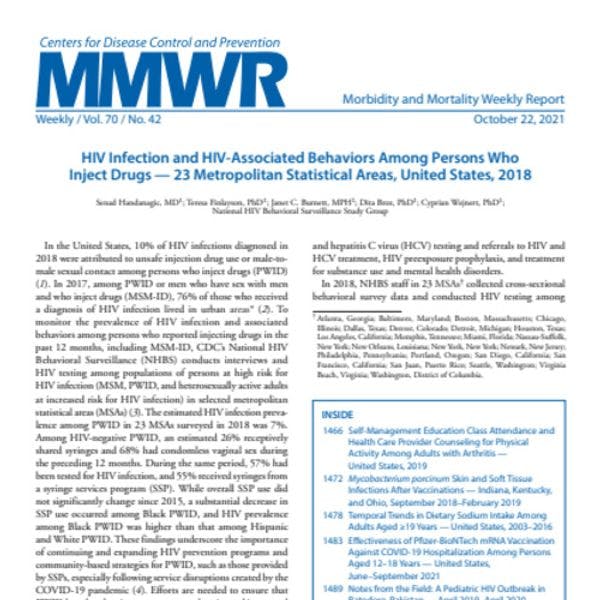HIV infection and HIV-associated behaviours among persons who inject drugs in the United States
By Senad Handanagic, Teresa Finlayson, Janet C. Burnett, Dita Broz, Cyprian Wejnert / National HIV Behavioral Surveillance Study Group
What is already known about this topic?
In 2015, the estimated HIV infection prevalence among persons who inject drugs (PWID) in 20 U.S. metropolitan statistical areas was 7%.
What is added by this report?
In 2018, estimated HIV prevalence among PWID remained unchanged, and although overall syringe service program use did not significantly change, a substantial decrease in their use occurred among Black PWID.
What are the implications for public health practice?
Low-barrier access is needed to comprehensive and integrated needs-based syringe service programs (where legally permissible) that include provision of sterile syringes and safe syringe disposal, HIV and hepatitis C virus testing and referrals for treatment, HIV preexposure prophylaxis, and treatment for substance use and mental health disorders for PWID.
